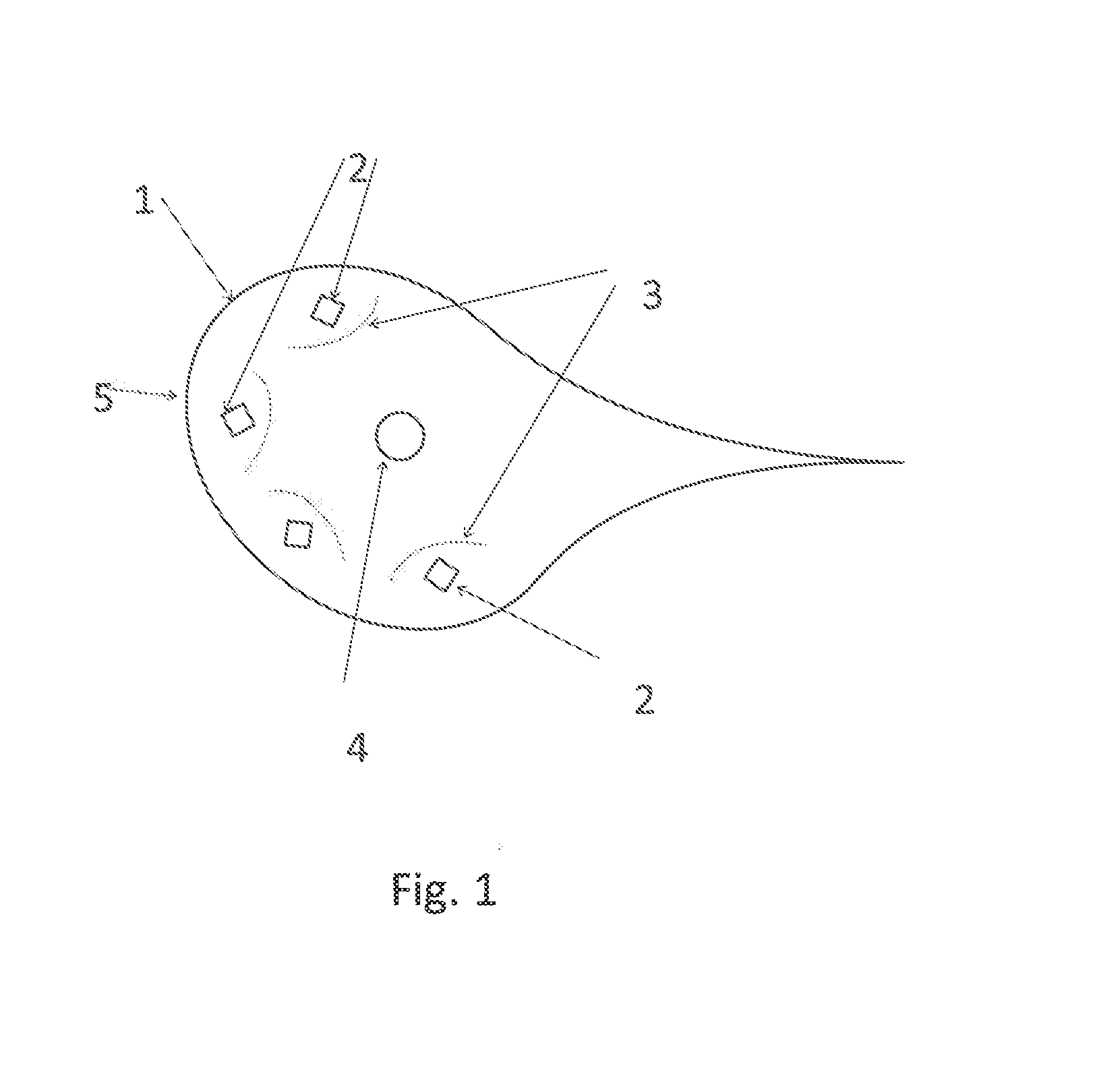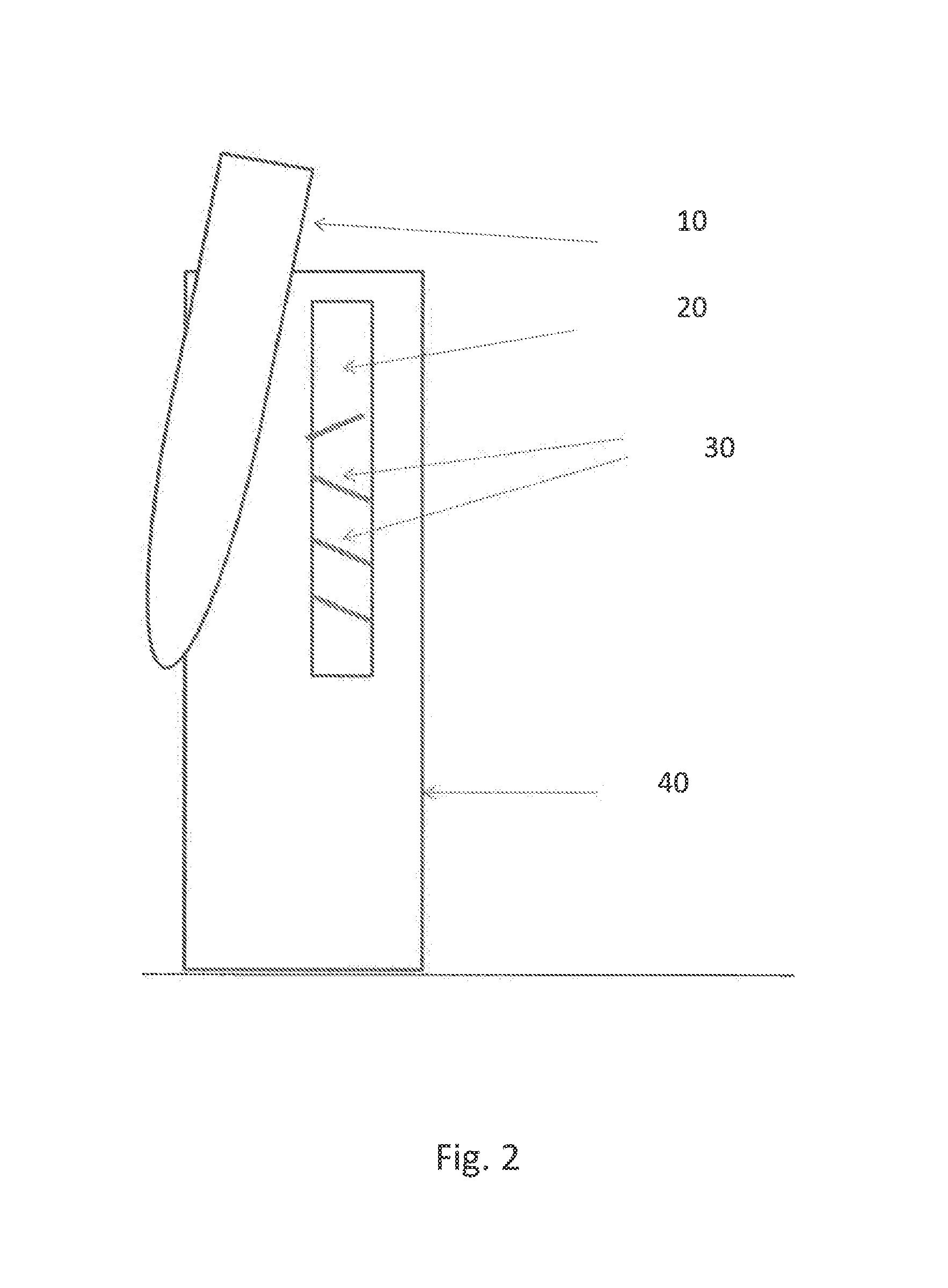Deicing of a surface of structures in general such as wind turbine blades, aircraft wings using induction or radiation
a technology of induction or radiation and surface deicing, which is applied in the direction of motors, wind energy generation, electrical equipment, etc., can solve the problems of ice accretion on aircraft wings, unfavorable ice accretion, and major problems, so as to improve the absorption of electromagnetic waves and facilitate microwave radiation
- Summary
- Abstract
- Description
- Claims
- Application Information
AI Technical Summary
Benefits of technology
Problems solved by technology
Method used
Image
Examples
example 1
[0023]FIG. 1 illustrates a structure in general in the form of a cross-section of a wind turbine blade having a leading edge 5 and provided with an outer skin composition 1, containing a layer comprising materials, such as CNTs, which can absorb IR / microwave radiation, at least one microwave emitter or magnetron 2, possible shielding elements 3 and lightning protection system 4, respectively. The lightning protection system 4 is typically a cable.
[0024]An aircraft wing is built similarly except that deicing is often only required at the leading edge area.
[0025]As shown the wind turbine blade, preferably in the form of a polymeric blade, is coated using a composition 1 containing more than 0.1% weight of CNTs. The composition 1 may preferably comprise epoxy or polyurethane or materials which are compatible with the construction material of the blade. The composition may be coated onto textile or a woven or non-woven carrier to simplify the production. The composition as such may be v...
example 2
[0033]Aircraft wings: The solution resembles the solution for wind. turbine blades except that aircraft wings usually contain fuel. Therefore special precautions are used to separate the fuel volume from the volumes irradiated by the magnetrons, and to insulate all electrical connections to the magnetrons or IR radiators from contact with fuel. However, typically it is sufficient to heat the leading edge of aircraft wings such that the volume requirement is limited. In addition, the waveguide for microwaves (see example 1) can also serve as construction material (both in wind power and airplane wings). It can also serve as lightning receiver or conductor, see above.
example 3
[0034]Overhead power lines: Power lines can be coated with a composition containing CNTs and the strong current combined with high voltage induces currents in the conductive particles causing heating of the coating. Especially alternating current is effective in electromagnetic induction. Useful polymeric materials to embed the CNTs are polyurethane, some epoxy types, and silicone rubber. Preferred are elastic materials as power lines expand with temperature variations and move and deform in strong winds.
PUM
| Property | Measurement | Unit |
|---|---|---|
| thickness | aaaaa | aaaaa |
| thickness | aaaaa | aaaaa |
| frequencies | aaaaa | aaaaa |
Abstract
Description
Claims
Application Information
 Login to View More
Login to View More - R&D
- Intellectual Property
- Life Sciences
- Materials
- Tech Scout
- Unparalleled Data Quality
- Higher Quality Content
- 60% Fewer Hallucinations
Browse by: Latest US Patents, China's latest patents, Technical Efficacy Thesaurus, Application Domain, Technology Topic, Popular Technical Reports.
© 2025 PatSnap. All rights reserved.Legal|Privacy policy|Modern Slavery Act Transparency Statement|Sitemap|About US| Contact US: help@patsnap.com



